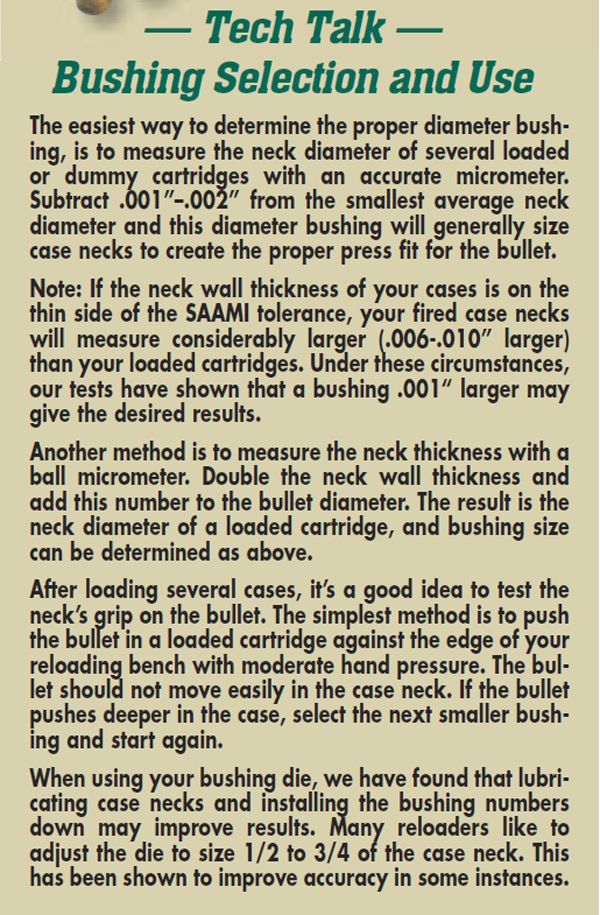adamsgt
Jerry Adams
Took my Ruger precision Rifle to the range last week to get the scope dialed in. I used Federal GM .308 w/168 gr Sierra MK bullet ammunition. Shot about 20 rounds at 100 yards. Groups were unremarkable. At home I measured the neck size of the fired cases and they ran .346. I seated a Sierra 168 MK in a Lapua .308 case and the neck diameter measured .339 That's a .007 difference. Both the Federal and Lapua neck thickness was about .015.
Is this cause for concern? It's not what we expect with BR calibers. Don't know if that could be the reason for the lackluster groups I saw. I called Ruger to ask about the chamber neck diameter but the rep said he could only discuss the land and groove measurements in the barrel. Instead he recommended that I shoot Black Hills .308 ammo. The rep seemed pissed that I dared to ask him something he couldn't read off a script.
In the Sinclair catalog, on page 37, there is a discussion on appropriate bushing size from Redding. In the case where the fired case neck size is considerably larger(.006 to .010), tests have shown that a bushing .001 larger (than the loaded round) may give you the desired bullet grip. Since this seems to fit my situation, it implies that I should use a .340 neck bushing. I'm not sure I understand this. Help Please.
Is this cause for concern? It's not what we expect with BR calibers. Don't know if that could be the reason for the lackluster groups I saw. I called Ruger to ask about the chamber neck diameter but the rep said he could only discuss the land and groove measurements in the barrel. Instead he recommended that I shoot Black Hills .308 ammo. The rep seemed pissed that I dared to ask him something he couldn't read off a script.
In the Sinclair catalog, on page 37, there is a discussion on appropriate bushing size from Redding. In the case where the fired case neck size is considerably larger(.006 to .010), tests have shown that a bushing .001 larger (than the loaded round) may give you the desired bullet grip. Since this seems to fit my situation, it implies that I should use a .340 neck bushing. I'm not sure I understand this. Help Please.


